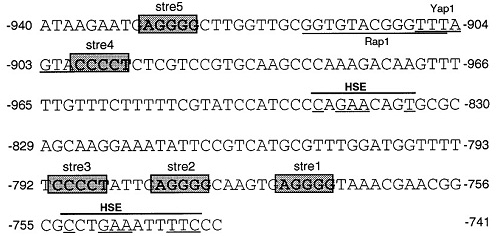Team:TU Munich/Project/Ethanol Inducible Promoter
From 2012.igem.org



Contents |
Ethanol Inducible Promoter
Background and principles
Original organism: Kluyveromyces lactis
K. lactis is a crabtree-negative yeast, which means it does not produce ethanol under aerobic conditions. S. cerevisiae, on the other hand, is crabtree-positive. Another interesting fact about K. lactis is its ability to grow on ethanol as the only carbon source (Breunig et al., 1999, [http://www.ncbi.nlm.nih.gov/pubmed?term=10862884]).
KlADH4
The K. lactis gene KlADH4 encodes a mitochondrial Alcohol Dehydrogenase which can be specifically induced by ethanol and is insensitive to glucose repression. A small region in the KlADH4 promoter, called UASE, is responsible for expression of the gene in presence of ethanol (Mazzoni et al., 2000 [http://www.ncbi.nlm.nih.gov/pubmed?term=10724480]). UASE is a cis-element of the KlADH4 promoter spanning from -953 to -741. When inserted into the promoters of heterologous genes, these genes become ethanol-inducible.
The sequence contains (Mazzoni et al. 2000):
- a putative binding site for Yap1p between -906/-900, a transcription factor involved in stress response in S. cerevisiae and K. lactis
- consensus sequence of the binding site of Rap1 protein. RAP1 (repressor activator protein 1) is an essential gene present in both S. cerevisiae and K. lactis and acts positively or negatively on the expression of many genes. Rap1 binding sites have been found in promoters of glycolytic genes where they play a positive role in transcription.
- Five STREs (stress response elements). STREs have been found in the promoters of many S. cerevisiae genes, where they are present in two or more copies in both orientations
- Two HSEs (heat shock elements). HSEs have been found in combination with STREs in many stress-responsive genes of S. cerevisiae.
Despite the presence of the STREs, KlADH4 is not a stress responsive gene but specifically induced by Alcohol (Mazzoni et al., 2000).
Idea
Although there is evidence that the KlADH4 promoter can be used for ethanol dependent production of recombinant proteins in K. lactis (File:TUM12 Paper KlADH4 for recombinant expression.PDF), I did not find any literature which indicated that this alcohol-inducibble promoter has been used in other organisms such as S. cerevisiae.
Mazzoni et. al (2000) annotated binding sites for two transcription factors (Rap1 and Yap1) as well as some small cis-elements (HSEs and STREs) in the UASE-region of the KlADH4-promoter. All of these factors are not only present in K. lactis but also in S. cerevisiae.
References
- Breunig KD., Bolotin-Fukuhara M., Bianchi MM., Bourgarel D., Falcone C., Ferrero I I., Frontali L., Goffrini P., Krijger JJ., Mazzoni C., Milkowski C., Steensma HY., Wésolowski-Louvel M., Zeeman AM. (2000),'Regulation of primary carbon metabolism in Kluyveromyces lactis', Enzyme Microb Technol. 26 (9-10), 771-780.
- Mazzoni, C., Santori, F., Saliola, M. & Falcone, C. (2000) ‚Molecular analysis of UASE, a cis element containing stress response elements responsible for ethanol induction of the KlADH4 gene of Kluyveromyces lactis’, Res. Microbiol. 151, 19-28.
- Kuge S., Jones N. (1994) ,YAP1 dependent activation of TRX2 is essential for the response of S. cerevisiae to oxidative stress by hydroperoxides', EMBO J. 13, 655–664.
 "
"

